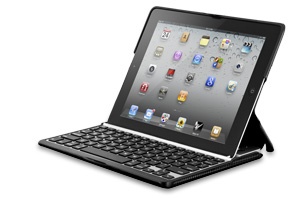Touchscreen desktops and laptops won’t be the norm for several years, but I think Apple will, not surprisingly, be head of the curve.
In fact, I think by late 2011, if not before, we’ll see Macs with touchscreens running an operating system that merges features of the iPhone OS and Mac OS X. Apple is already prepping us for this with multi-touch on its laptops and the multi-touch features of the Magic Mouse.
Touchscreen Macs will first gain ground among young end users, move onto small and home business owners, then — dare we hope? — the enterprise. Research from the Gartner research group backs this up.
“What we’re going to see is the younger generation beginning to use touchscreen computers ahead of enterprises,” says Leslie Fiering, research vice president at Gartner. “By 2015, we expect more than 50 % of PCs purchased for users under the age of 15 will have touchscreens, up from fewer than 2% in 2009. On the other hand, we are predicting that fewer than 10% of computers sold to enterprises in 2015 for mainstream knowledge workers will have touchscreens.”
Of course, Apple has never seemed overly interested in the enterprise arena, so I think they’ll be happy to have their next gen Macs flourish first among the young. Fiering said that although touch and pen input are not new to the computer industry — both have been available, largely as niche products for vertical industry applications, for over 20 years — there’s renewed interest in touch input today. Multitouch on smartphones and the iPhone/iPod touch phenomenon have shown users how useful touch can be with the right implementation — and Apple’s introduction of the larger iPad has set off a wave of speculation about changing the industry.
The earliest adopters of touch-enabled devices will be consumers who rarely deal with legacy issues. They’ll be looking for entertainment and casual gaming applications. Gartner predicts that iPhone and touch-enabled smartphone users will want to extend the multitouch experience to their computing. The iPad and the overwhelming majority of slate, tablet and touch-enabled convertible devices planned for 2010 will have a consumer focus.
Touch-enabled devices will have slow adoption in the enterprise, due to heavy requirements for typing and text input, Gartner analysts say. The “muscle memory” of mouse users and the potential problems of moving a user’s hands from the keyboard to the mouse will create particular adoption barriers for knowledge workers. Instead, consumers and education will be the earliest adopters of touch-enabled computers and notebooks.
One of the key target usages for the next wave of tablets will be media content consumption (movies, newspapers and e-books), and the real success driver for entertainment devices will be the content delivery ecosystem. If this category succeeds, it’ll create greater market awareness of and demand for touch in other computer applications.
As prices drop, education will become a major market for touch and pen-enabled devices. Younger children just entering school find direct manipulation on the screen a natural way to interact with their computers. Older students are already using pen input to annotate class material or capture formulae and graphics that can’t be recorded with keyboards (for math, chemistry and physics classes, among others).
However, most school districts don’t want to support two separate devices — one for touch and another for pen. To deal with the differing requirements of the different grades, most districts are looking for dual-input screens that support both touch and pen in a single device.
“Consensus among the Gartner client U.S. school districts is that over half, and possibly as many as 75%, will be specifying touch and/or pen input within the next five years,” says Fiering. “Consider this as the precursor to a major upcoming generational shift in how users relate to their computing devices.”
And you can count on Apple being in the forefront of that generational shift.
Conversely, enterprises will be slow to adopt touch input for mainstream knowledge workers. The long tail of legacy enterprise applications that don’t leverage touch, and the large contingent of mouse-trained employees, will make many enterprises doubt the business case for adding touch — and any additional costs — to computer hardware standards. However, employees are increasingly bringing their own computers and technologies to work, whether sanctioned or not, and as with other consumer technologies, enterprises will eventually be forced to acknowledge the use of touch for their mainstream knowledge users.
Touch and pen are already being used in many enterprise vertical applications for field service, law enforcement and clipboard replacements. Touch is also being used in many customer-facing situations like information kiosks and automated teller machines (ATMs). This trend will grow as touch-enabled hardware prices continue to drop and application software gets more sophisticated. Restaurants, retail and healthcare providers (for patient admittance, charting and patient records) may be among the largest adopters.
For workers immersed in graphics data analysis, touch will extend the value of the datasets as users directly manipulate the resulting graphs. Software support will be the big issue. Over time, as more touch-based graphics analysis applications become available, the features will move down market for mainstream employees, but not in the near term.
Gartner expects progress to be evolutionary rather than revolutionary. No single “killer application” will change the market overnight; rather, there will be an incremental introduction of user interface and ergonomics improvements, drops in hardware prices and increases in touch-enhanced software.
“As with many recent technology advances, touch adoption will be led by consumers and only gradually get accepted by the enterprise,” Fiering says. “What will be different here is the expected widespread adoption of touch by education, so that an entire generation will graduate within the next 10 to 15 years for whom touch input is totally natural.”
As for those next gen, touchscreen-enabled gen Macs? They may well run Apple-developed chips. But that’s a story for another day.


